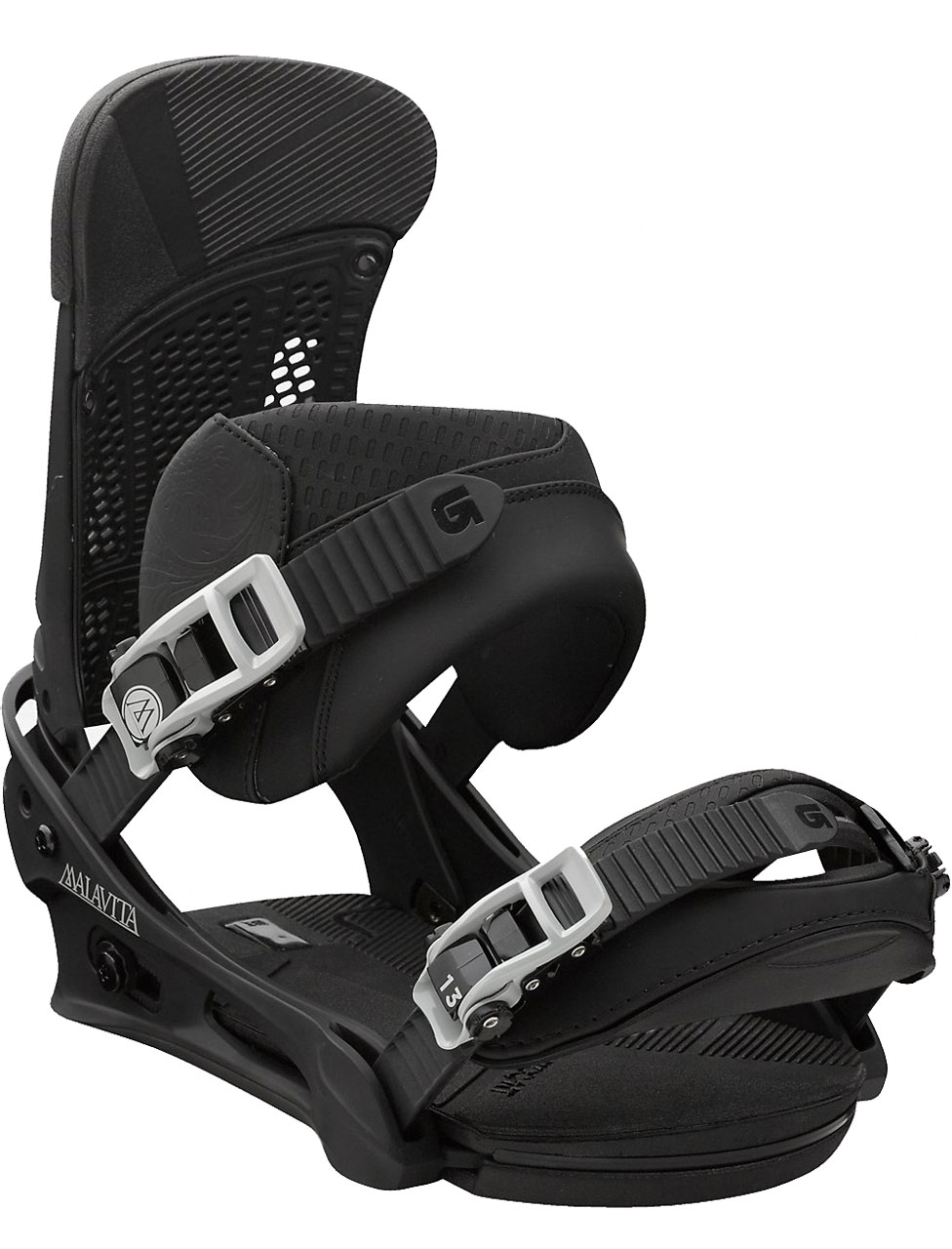 Binding: 2013 Burton Malavita Re:Flex
Binding: 2013 Burton Malavita Re:Flex
Boards Used:
- Burton Easy Livin
- Gnu Riders Choice
Days Tested: 35+
Test Location: Timberline Ski Resort; Windells, Mt. Hood, Oregon
MSRP: $260
Whenever I’m looking for new bindings, I always take a look at Burton. Ever since purchasing my first pair, I’ve been a fan of their quality, design, and technology.
For several years I rode Burton’s P1 binding (their top-tier freestyle binding) before Burton gradually phased them out. The P1 had an exceptionally well-padded ankle strap and a hi-back with medium flex (like the Malavita), two things that I place particular emphasis on when choosing bindings.
The Malavita came onto my radar when it was introduced in 2010 as a high-end park binding for advanced riders. Burton advertised that both Nicolas Muller and Danny Davis rode the binding, which gave me high expectations. Since then, the Malavita has become the go-to binding for Burton team riders and professionals looking for a quality, medium-flex binding suitable for all types of terrain with a freestyle emphasis.
The design of the Malavita hasn’t changed much since then, with the exception of hollowed out areas in the hi-back to decrease weight, and the addition of Burton’s Re:Flex technology. I’d never ridden a binding with the Re:Flex baseplate before (Burton’s name for their hollowed out foot bed), but got my first chance this past summer at Windells Camp at Mt. Hood.

Flexibility / Board Feel
With Re:Flex, Burton has introduced a middle ground between their EST and classic binding lines. Where EST has an entirely foam footbed, and classic bindings have a plastic or metal base, Re:Flex combines the two, dramatically reducing the amount of plastic underfoot while simultaneously adding a “FullBED” removable foam base pad. The goal is to give the Malavita (and other Re:Flex bindings, like the Burton Cartel) better flexibility underfoot to flex with the board and increase board feel.
I can’t say that I felt a significant increase in horizontal flex or board feel when comparing the Malavita to the Bend Metal or Drake Super Sport bindings I was also riding. There was also no discernable difference in the board feel when using the Malavitas on two different boards (Burton Easy Livin and Gnu Riders Choice).
What I did notice, however, was the difference the FullBED cushion made when taking a hard landing. No amount of binding cushion is going to make coming up short on a jump comfortable, but the additional padding certainly decreased the amount of impact on my knees compared to the traditional baseplate and thinner padding of Super Sports.

Heel Lift
Another feature that was new to me, the Heel Hammock, is Burton’s attempt to address heel lift. Essentially a “reinforced rubbery material” (Burton’s phrase) that runs around the heel of the binding, it supposedly maintains the binding’s responsiveness when running with your straps a little looser, such as when hitting rails.
I found the Heel Hammock to work pretty well. When I did ride with my binding straps a little looser, I didn’t experience heel lift as frequently as I did with other bindings. It also meant I didn’t need to crank my ankle straps quite as tight as I usually do to maintain the same sense of security between my boot and binding.
However, I do think it could be improved by using a stiffer or thicker rubber. The current material began to rip after three weeks of riding, and although it hasn’t affected the functionality of the binding, I could foresee it becoming worse and decreasing the functionality of the hammock after continued use. (I’ll be sure to post any relevant updates as I continue to ride the Malavitas later this winter.)
